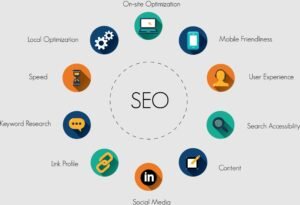
Outsourcing website development can be a smart move—saving you time, money, and stress while giving you access to expert talent. But if you’ve never done it before, the process can feel overwhelming.
We help businesses like yours navigate the digital world. In this guide, we’ll explain how to outsource website development the right way, step by step.
✅ What Does It Mean to Outsource Website Development?
Outsourcing means hiring a third-party team or freelancer (often outside your country or company) to build your website instead of doing it in-house.
This could be a full-service agency, a freelance developer, or even a specialized web development firm.
🚀 Why Do Businesses Outsource Web Development?
- Cost-effective: Lower development costs, especially if you hire from countries with affordable rates
- Access to expertise: Work with skilled developers and designers who specialize in the tech you need
- Faster delivery: Focus on your business while the experts handle your website
- Scalability: Easily scale the project as your needs grow
📌 Steps to Outsource Website Development Successfully
1. Define Your Project Goals
Before reaching out to anyone, get clear on:
- What type of website do you need (e.g., business site, e-commerce, blog)?
- What features are essential (e.g., contact forms, payment gateway, CMS)?
- What’s your budget and timeline?
2. Choose the Right Partner
Look for:
- Portfolio & experience in your industry
- Client reviews or testimonials
- Technical expertise (e.g., WordPress, Shopify, custom coding)
- Clear communication skills
Pro Tip: We offer transparent pricing, full project support, and a proven track record in SEO-friendly, high-performance websites.
3. Decide on the Outsourcing Model
You can choose between:
- Freelancers (great for small or one-off projects)
- Web development agencies (best for full-service solutions)
- Dedicated remote teams (ideal for long-term or complex builds)
4. Create a Detailed Brief
Your project brief should include:
- Site structure or sitemap
- Design inspiration or references
- List of required features
- Branding guidelines (colors, logos, fonts)
- Budget and timeline
This helps the developer understand your vision clearly.
5. Set Clear Communication Channels
Choose tools like:
- Email or Slack for regular updates
- Zoom or Google Meet for discussions
- Trello, Asana, or Notion for task tracking
6. Ask for Milestones & Reports
Break the project into phases:
- Planning
- Design mockups
- Development
- Testing
- Launch
Review work at each stage and give feedback promptly.
7. Protect Your Data and IP
Sign a Non-Disclosure Agreement (NDA) and ensure that all code, content, and graphics belong to you after project completion.
🛡️ Common Mistakes to Avoid
- Picking the cheapest option without checking quality
- Not setting clear expectations or timelines
- Ignoring maintenance and post-launch support
- Failing to test the website before going live
💼 Want to Outsource Without the Headache?
We offer end-to-end web development solutions that are:
- Custom-built for your brand
- Optimized for performance and SEO
- Delivered on time with full transparency
Whether you’re a startup, small business, or growing enterprise — we make outsourcing stress-free and successful.
👉 Contact us today to schedule a free consultation.
💡 Final Thoughts
Outsourcing website development doesn’t have to be risky or complicated. With the right planning and a reliable partner, it can be one of the best decisions you make for your business growth.
Let the experts handle your website while you focus on scaling your brand.








Add comment